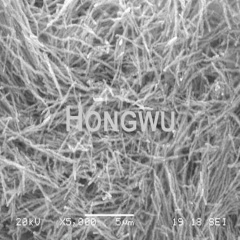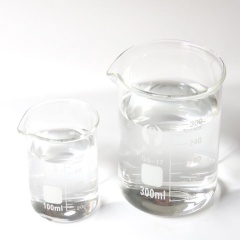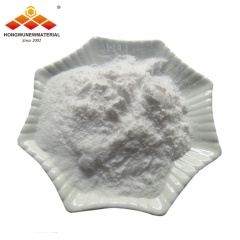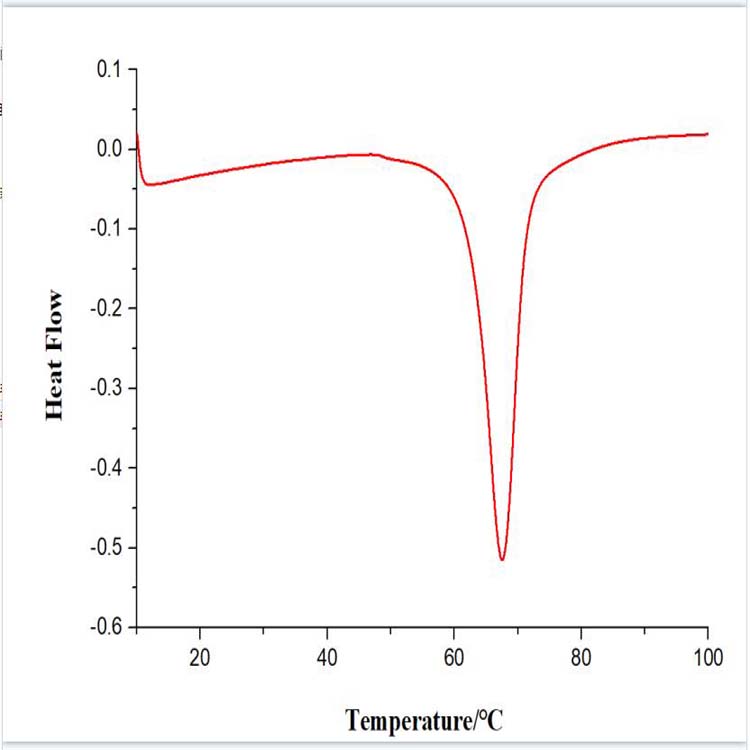Properties of Silicon Carbide Whisker SiC Whisker (SiC-w) is a highly oriented single crystal fiber with a diameter ranging from nanometer to micrometer. The crystal structure is similar to that of diamond. There are few chemical impurities in the crystal and no grain boundaries. The crystal structure has few defects and the crystal phase component is uniform. It has high melting point, low density, high strength, high modulus of elasticity, low thermal expansion rate, and wear resistance, corrosion resistance, and high temperature oxidation resistance. It is mainly used in toughening applications where high temperature and high strength applications are required. The relevant indicators are shown in the following table:
Melting point >2700 Density 3. 21g /cm3 Tensile strength 2100kg /cm2 Elastic modulus 4. 9×104kg /cm2
SiC-w has two crystal forms of α type (hexagonal and rhombohedral structure) and β type (face-centered cubic structure), and the β type is superior to α type in all aspects. At present, only β-SiC-whiskers has achieved industrial scale production, so the research and use is mainly β-SiC-whiskers.
SiC-w can be used to toughen ceramic matrix composites
-w toughened ceramic materials are mainly Al2O3, ZrO2, mullite ceramics and the like. As the composite technology continues to mature, SiC-w toughened composite materials such as Si3N4, ZrB2 and glass ceramics have emerged.
1) Al2O3 ceramic matrix composite
Alumina ceramics have the advantages of high melting point, high hardness, wear resistance and structural stability, but their strength is low. After toughening and strengthening by SiC-w, the toughness can reach above 9MPa·m1/2, and the strength can reach 600-900Mpa.
The use of silicon carbide whiskers to further broaden the use of alumina has been applied to wear parts, cutting tools and certain components of internal combustion engines. Among them, SiC whisker toughened ceramic cutting tool materials have excellent performance in cutting difficult alloys such as high-temperature alloys due to their good fracture toughness and thermal shock resistance, prolonging the service life of the tool, and the cutting efficiency is much higher. Ordinary tools have great application potential.
2) ZrO2 ceramic matrix composite
Zirconium oxide ceramics are widely used as refractories, fast ion conductors, high temperature heating elements, etc. due to their high chemical stability, high melting point, and good high temperature conductance. Due to the failure of the phase transformation toughening mechanism at high temperatures, its high temperature mechanical properties are seriously deteriorated. The addition of SiC-w can increase its modulus of elasticity, hardness, high temperature strength and toughness, thereby expanding its application range.
At present, SiC-w toughened ZrO2 ceramics can be applied to gas turbine rotors, turbine stator blades, various ceramic engine parts, ceramic tools, wire drawing dies, bearings, etc. used above 1350.
3) mullite ceramic matrix composite
Mullite ceramic has the advantages of uniform expansion, good thermal shock resistance, high hardness and low temperature creep value. It is a high-quality refractory material, but its toughness is relatively low, thus affecting its practical application.
There are researchers from Chinese Academy of Sciences used 30 vol% β-SiC whiskers to reinforce mullite. Under SPS sintering conditions, the material strength is about 10% higher than the hot pressure, 570 MPa, and the fracture toughness is 4.5 Mpa 1/2. Mullite increases by more than 100%
4) ZrB2 ceramic matrix composite
ZrB2 ceramics have the advantages of high melting point, high hardness, excellent wear resistance and chemical stability. They are typical ultra-high temperature ceramics and can be used in metallurgical industry, casting of electronic equipment and refractory metals. Due to the low toughness, it limits the further expansion of its application range. The addition of SiC-w to the ZrB2 matrix improves the toughness of the material.
Studies have shown that when silicon carbide whiskers are added in a volume fraction of 30%, the toughness of the material can reach 6.33 MPa·m 1/2, which is 71% higher than that of pure ZrB2 ceramics, and 33% higher than that of SiC particles toughened ZrB2 ceramics. %. SiC-w toughened ZrB2 ceramics can be used in thermal protection equipment, front compartments of supersonic aerospace vehicles, and heat-resistant components such as rocket nozzles.
5) SiC whisker toughened silicon nitride ceramics
SiC whisker toughening Si3N4 ceramics is one of the main ways to improve its fracture toughness and stability. Previous studies have shown that whisker toughening effect depends not only on the degree of whisker dispersion, whisker size and volume fraction, but also on the spatial position and orientation of whiskers.
Researchers have studied the whisker orientation in silicon nitride-based composites of SiC whiskers. When the whiskers are in the same direction and the whiskers are weakly connected to the substrate interface, the fracture toughness in this direction has a maximum value. The strength and fracture toughness were 1038 MPa and 10.7 MPa m 1/2, respectively.
A series of excellent physical and mechanical properties and chemical properties of silicon nitride ceramics have great market and application potential in high temperature structural materials, tool ceramic materials, wear resistant ceramic materials and wear resistant ceramic materials. With the deepening of whisker toughening research, the application of silicon nitride ceramics in tools, bearings, engines, insulation materials, etc. will be more perfect.
6) glass ceramic matrix composite
The addition of SiC-w to the glass ceramic not only preserves the advantages of easy glass forming, but also increases the strength and toughness of the material by more than two times.
For example, SiC-w toughened and reinforced bioactive glass-ceramic composites have a toughness of 4.3 MPa·m 1/2, a strength of up to 460 MPa, and a Weibull coefficient of up to 24.7, due to the non-toxicity of SiC-w and the bioactivity of bioglass ceramics. The material has a life expectancy of more than 50 years under the stress equivalent to the flexural strength of the human body, and is the bio-ceramic material with the longest life expectancy. It can be used to prepare artificial teeth and bone repair materials and bones such as bones and joints. Tissue engineering scaffolding material.


 English
English français
français Deutsch
Deutsch русский
русский italiano
italiano español
español português
português 日本語
日本語 한국의
한국의 Türkçe
Türkçe
















 8620-87226359,8620-87748917
8620-87226359,8620-87748917

